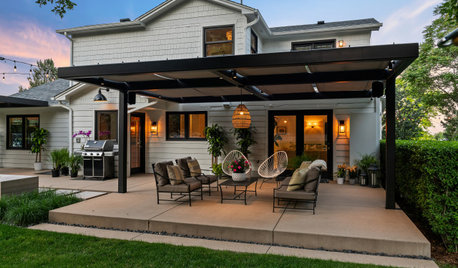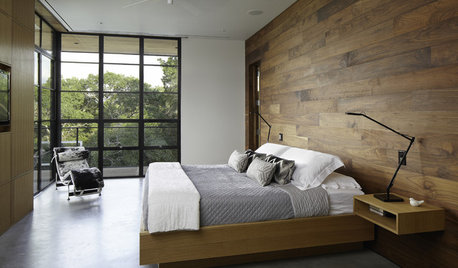Cornfused - Exterior wall insulation/construction
harp24
12 years ago
Related Stories

KNOW YOUR HOUSEKnow Your House: The Basics of Insulated Concrete Form Construction
Get peace and quiet inside and energy efficiency all around with this heavy-duty alternative to wood-frame construction
Full Story
GREEN BUILDINGInsulation Basics: Heat, R-Value and the Building Envelope
Learn how heat moves through a home and the materials that can stop it, to make sure your insulation is as effective as you think
Full Story
REMODELING GUIDESCool Your House (and Costs) With the Right Insulation
Insulation offers one of the best paybacks on your investment in your house. Here are some types to discuss with your contractor
Full Story
MATERIALSInsulation Basics: What to Know About Spray Foam
Learn what exactly spray foam is, the pros and cons of using it and why you shouldn’t mess around with installation
Full Story
GREEN BUILDINGEcofriendly Cool: Insulate With Wool, Cork, Old Denim and More
Learn about the pros and cons of healthier alternatives to fiberglass and foam, and when to consider an insulation switch
Full Story
GREEN BUILDINGInsulation Basics: Designing for Temperature Extremes in Any Season
Stay comfy during unpredictable weather — and prevent unexpected bills — by efficiently insulating and shading your home
Full Story
WORKING WITH PROSYour Guide to a Smooth-Running Construction Project
Find out how to save time, money and your sanity when building new or remodeling
Full Story
BUDGETING YOUR PROJECTConstruction Contracts: What to Know About Estimates vs. Bids
Understanding how contractors bill for services can help you keep costs down and your project on track
Full Story
REMODELING GUIDESConstruction Timelines: What to Know Before You Build
Learn the details of building schedules to lessen frustration, help your project go smoothly and prevent delays
Full Story
REMODELING GUIDESWhat to Consider Before Starting Construction
Reduce building hassles by learning how to vet general contractors and compare bids
Full StoryMore Discussions








renovator8
renovator8
Related Professionals
Royal Palm Beach Architects & Building Designers · Glassmanor Design-Build Firms · Los Banos Home Builders · Troutdale Home Builders · Buenaventura Lakes Home Builders · Abington General Contractors · Berkeley General Contractors · Hercules General Contractors · Hermitage General Contractors · Hillsborough General Contractors · Montebello General Contractors · Perrysburg General Contractors · Saint George General Contractors · San Bruno General Contractors · Winfield General Contractorsdavid_cary
renovator8
harp24Original Author
worthy
brickeyee
flgargoyle
robin0919
energy_rater_la
Epiarch Designs
harp24Original Author
robin0919
Alex House
david_cary
renovator8
flgargoyle
Epiarch Designs
worthy
flgargoyle
renovator8
renovator8
SpringtimeHomes
Epiarch Designs
robin0919
Epiarch Designs
SpringtimeHomes
Epiarch Designs
SpringtimeHomes
Alex House
worthy
Epiarch Designs